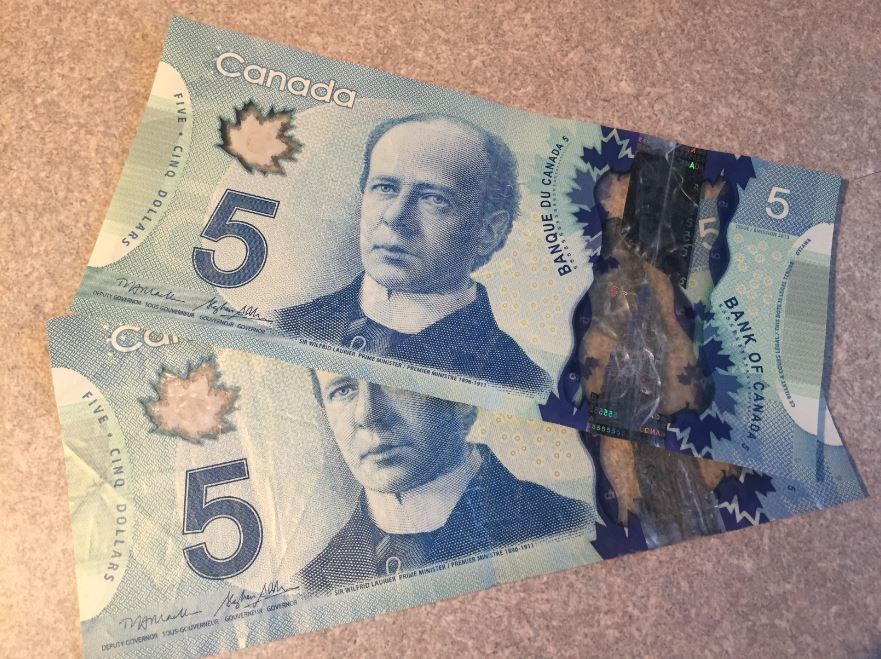Won Cumyow and Chloe Cooley are New West councillor Jaimie McEvoy’s picks of historical figures who are worthy of being on Canada’s next $5 bill.
The Bank of Canada is accepting nominations for iconic Canadians who will appear on the next $5 bill. Nominees must have been deceased for at least 25 years, must be a Canadian by birth or naturalization who has demonstrated leadership, achievement or distinction in any field, benefiting the people of Canada or in the service of Canada, and must not be a fictional character.
Cumyow, the first Canadian-born person of Chinese ethnicity, was a key leader of the Chinese community and was the head figure of various associations.
“Cumyow studied law, and was the first person of Chinese heritage to earn a law degree. Although he even articled at law firms as a lawyer, he was not allowed to become a lawyer, because he did not fulfill the requirement of being a registered voter, even though Chinese people were barred from voting by law,” McEvoy said. “He went on instead to become court interpreter, first in New Westminster, then in Vancouver, due to his ability to speak English, Chinese and Chinook.”
In a write-up on his Facebook page, McEvoy said Cumyow attended school with Richard McBride, who would go on to severely restrict the civil rights of Chinese persons. He notes that Cumyow was a leader in the Chinese community and spent much of his life campaigning for the right to vote.
“When Chinese persons were stripped of the right to vote, Cumyow was too young to be eligible, but he still voted during the ban in defiance. Cumyow was able to vote because the returning officer in New Westminster refused to deny the right to vote to someone who had been born in Canada,” McEvoy said. “Thus, although persons of Chinese descent were denied the right to vote in 1875, he was still (illegally) kept on the voter's list by local officials until 1898. In 1902, he appealed twice to the province over his removal, only to be ignored.”
According to McEvoy, Cumyow lived long enough to be the first Chinese Canadian to vote both before and after disenfranchisement. He believes the photo of Won Cumyow casting his ballot after 51 years is a powerful story and image that speaks to all of those Canadians who were disenfranchised and eventually fought for the right to have that vote restored.
“After having not been allowed to vote for 51 years, and having been officially disenfranchised for 74 years even before he was old enough, Won Cumyow would vote again, age 86, in 1949, after a life-long campaign,” he writes. “The only Chinese person to vote both before (actually, during) disenfranchisement and afterwards.”
McEvoy is also nominating Chloe Cooley, who help lead to the abolishment of slavery in Canada. An enslaved black woman, Cooley was bound, thrown in a boat and sold to a new owner in the United States on March 14, 1793.
“Her screams and violent resistance were brought to the attention of Lieutenant Governor John Graves Simcoe …. Simcoe immediately moved to abolish slavery in the new province,” said an Ontario Heritage Trust sign posted on the Niagara Parkway in Ontario. “He was met with opposition in the House of Assembly, some of whose members owned slaves. A compromise was reached, and on July 9, 1793 an Act was passed that prevented the further introduction of slaves into Upper Canada and allowed for the gradual abolition of slavery although no slaves already residing in the province were freed outright. It was the first piece of legislation in the British Empire to limit slavery and set the stage for the great freedom movement of enslaved African Americans known as the Underground Railroad.”
According to McEvoy, the new Canadian law banned the importation of slaves and required that anyone born into slavery be released at the age of 25.
“Chloe Cooley's act of resistance and her decision not to go quietly laid out starkly the realities of slavery. Her resistance led to the only law on slavery adopted in Upper Canada, and to the end of the importation of slaves and the decision that hers would be the last generation of slaves in Canada,” he said. “This in turn set Canada as different from its neighbour to the South, and created the conditions of freedom that allowed the Underground Railroad into Canada.”
According to McEvoy’s research, it’s unknown what happened to Chloe Cooley after she was sold into the United States. Noting that no images are known to exist of Cooley, he’s asked a group of genealogists to help in learning more about Chloe.
The deadline to submit nominations is March 11. For more information, go to www.bankofcanada.ca.



